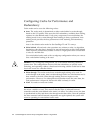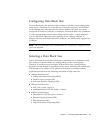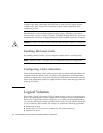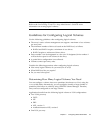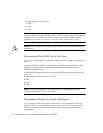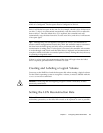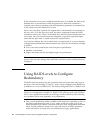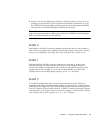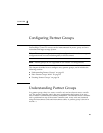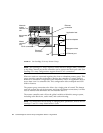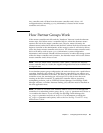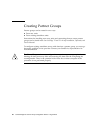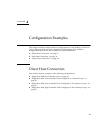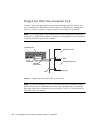
Chapter 2 Configuring Global Parameters 21
■ Second, you can use third-party software on the host system to create as many
partitions as desired from a given volume. In the Solaris environment, you can
use VERITAS Volume Manager or Solaris Logical Volume Management (SLVM)
formerly known as Solstice DiskSuite (SDS) for this purpose.
Note – For information on using the format utility, refer to the format (1M) man
page. For more information on third-party software or VERITAS Volume Manager,
refer to the documentation for that product.
RAID 0
Data blocks in a RAID 0 volume are striped across all the drives in the volume in
order. There is no parity data, so RAID 0 uses the full capacity of the drives. There is,
however, no redundancy. If a single drive fails, all data on the volume is lost.
RAID 1
Each data block in a RAID 1 volume is mirrored on two drives. If one of the
mirrored pair fails, the data from the other drive is used. Because the data is
mirrored in a RAID 1 configuration, the volume has only half the capacity of the
assigned drives. For example, if you create a 4-drive RAID 1+0 volume with
18-Gbyte drives, the resulting data capacity is 4 x 18 / 2 = 36 Gbytes.
RAID 5
In a RAID 5 configuration, data is striped across the drives in the volumes in
segments, with parity information being striped across the drives, as well. Because
of this parity, if a single drive fails, data can be recovered from the remaining drives.
Two drive failures cause all data to be lost. A RAID 5 volume has the data capacity
of all the drives in the logical unit, less one. For example, a 5-drive RAID 5 volume
with 18-Gbyte drives has a capacity of (5 - 1) x 18 = 72 Gbytes.




